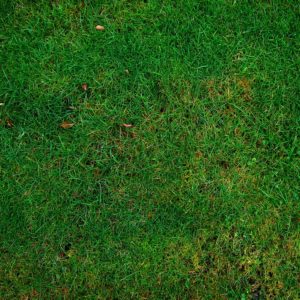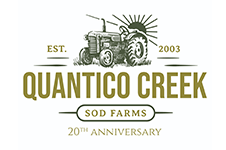
Ideally, soil aeration is the act of making small holes or perforations to allow the entry of air, water, and nutrients.
You see, overseeding is the process of spreading grass seeds over an established lawn. It is usually done to add thickness and color to your grass. The technique of overseeding is more or less the same. Below are six tips for effective overseeding.
Overseed At The Appropriate Time
Temperature is an essential factor for seed germination. Grass germinates properly under warm conditions. Ideally, most grass types grow when the soil temperature is between 50⁰F to 90⁰F (13⁰C to 32⁰C). Unfortunately, grass seeds will not germinate at extreme temperatures (too low or too high temperatures). Therefore, you should overseed your lawn during warm seasons, mostly in late summer or fall.
Aerate The Soil
Ideally, soil aeration is the act of making small holes or perforations to allow the entry of air, water, and nutrients. Before you overseed your lawn, we recommend that you properly aerate thatched and compacted soils to enhance proper water, air, and nutrient circulation.
Choose The Right Seed
Select the grass seeds that match your existing lawn as well as the climate. Ensure the grass types you choose can withstand climatic changes such as drought, hot and warm weather, etc.
Mow The Lawn
Assuming you are in the right season and have chosen the right seed, the next step is to cut your lawn short. Take care not to scrap your lawn while mowing but ensure you cut at a considerably low setting. After trimming, collect all the clippings and dispose of them appropriately. Mowing exposes germinating grass seeds to the optimum sunlight necessary for photosynthesis.
Ensure The Seeds Contact The Soil
To achieve optimum germination, your seeds must be in contact with the soil. Scientific studies have revealed when seeds are planted on top of old grass, a germination rate of about 2% is expected. So, after you overseed your lawn, rake the established grass, then add a layer (around ¼ – inch) of topsoil to the yard before seeding. Consider hiring a slice seeder when overseeding a vast area.
Once this is completed and the seed has been planted, we recommend spreading a thin layer of peat moss to the soil to cover the seed and aid with moisture retention. Peat moss also has a variety of other advantages for your grass, such as improved aeration. Additionally, it also adds nutrients to your lawn’s soil because it’s made of organic material. Some people propose covering the seed with straw. However, straw is ugly, slow to break down and retain moisture, and has been known to spread weeds.
Prune Nearby Trees
Most lawn grasses prefer full light (about 6 hours per day) and do not thrive in the shadow. Consider giving your trees a good trimming to assist your new grass thrive. More light and rain will reach your grass through a thinner, higher canopy, which will assist your grass in succeeding.
In my front yard, I have a giant Red Maple that hasn’t been clipped in years. Because of how much shade the tree cast, there was no grass growing beneath it. And that’s with exposure to the south. Not only does the tree now appear much better after rigorous pruning, but the grass beneath it is also flourishing.
Have More Questions? Stay in Touch!
Order early and order often to ensure the best service possible. Contact us through our online page. Please find us at 27616 Little Lane, Salisbury, Maryland 21801. Our phone number is 410-726-6103, and our fax number is 410-742-6550. Speak to Jason Anderson for Turf Grass Sales. Reach him by email at jason@quanticocreeksod.com. Finally, follow us on social media on Facebook, LinkedIn, and our blog!
